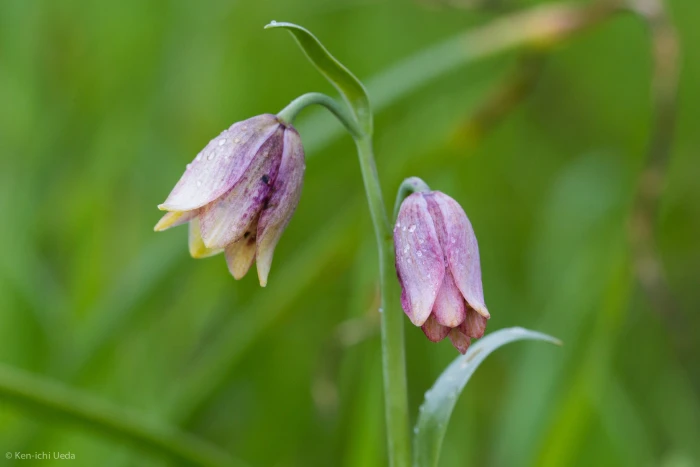Stinkbells
(Fritillaria agrestis)
Stinkbells (Fritillaria agrestis)
/
/

Ken-ichi Ueda
CC BY 4.0
Image By:
Ken-ichi Ueda
Recorded By:
Copyright:
CC BY 4.0
Copyright Notice:
Photo by: Ken-ichi Ueda | License Type: CC BY 4.0 | License URL: http://creativecommons.org/licenses/by/4.0/ | Rights Holder: Ken-ichi Ueda | Publisher: iNaturalist | Date Created: 2019-03-10T12:26:38-07:00 |

























Estimated Native Range
Climate Requirements for Farmers Branch, Texas
| This Plant | Your Site | Plant Suitability for Your Location | ||
|---|---|---|---|---|
| • Precipitation | 10" - 43" | 37" | Aquatic | Aquatic |
| • High Temp. | 78°F - 99°F | 96°F | Your summer temperatures are normal for this plant. | Excellent |
| • Low Temp. | 24°F - 39°F | 34°F | Your winter temperatures are normal for this plant | Excellent |
This plant may not grow well at your location - your precipitation is too high.
Summary
Fritillaria agrestis, commonly known as Stinkbells, is a perennial herb native to California’s grasslands, chaparral, and open woodlands, with populations from Mendocino County and Butte County to Ventura County. It is adapted to heavy soils, especially clay, and is considered uncommon in its native range. Stinkbells feature an erect stem that can reach up to half a meter in height, with 5 to 12 long, narrow leaves primarily clustered at the base. The distinctive nodding flower, blooming in the spring, is composed of six tepals that are white with greenish to pinkish markings on the outer surface and a striking purple-brown on the inner surface. The flowers emit an unpleasant odor, which is notable among gardeners and contributes to its common name.
Stinkbells are valued for their unique, bell-shaped flowers and their ability to thrive in heavy clay soils where other plants might struggle. They are often used in naturalistic plantings and wildflower gardens to add interest with their unusual flowers and foliage. In cultivation, they require minimal maintenance once established, preferring full sun to part shade and moderate water. While not commonly found in cultivation, they can be grown from bulbs and may be suitable for rock gardens or as part of a native plant collection. Due to their odor, they are typically not used near outdoor living spaces.CC BY-SA 4.0
Stinkbells are valued for their unique, bell-shaped flowers and their ability to thrive in heavy clay soils where other plants might struggle. They are often used in naturalistic plantings and wildflower gardens to add interest with their unusual flowers and foliage. In cultivation, they require minimal maintenance once established, preferring full sun to part shade and moderate water. While not commonly found in cultivation, they can be grown from bulbs and may be suitable for rock gardens or as part of a native plant collection. Due to their odor, they are typically not used near outdoor living spaces.CC BY-SA 4.0
Plant Description
- Plant Type: Herb
- Height: 1-2.5 feet
- Width: 0.5-1 feet
- Growth Rate: Slow
- Flower Color: Green, Purple, White, Yellow
- Flowering Season: Spring, Summer
- Leaf Retention: Deciduous
Growth Requirements
- Sun: Full Sun, Part Shade
- Water: Medium
- Drainage: Medium, Fast
Common Uses
Border Plant, Low Maintenance, Rock Garden
Natural Habitat
Native to California’s grasslands, chaparral, and open woodlands
Other Names
Common Names: Foulsmelling Fritillary
Scientific Names: Fritillaria agrestis, Fritillaria biflora var. agrestis, Fritillaria liliacea
GBIF Accepted Name: Fritillaria agrestis